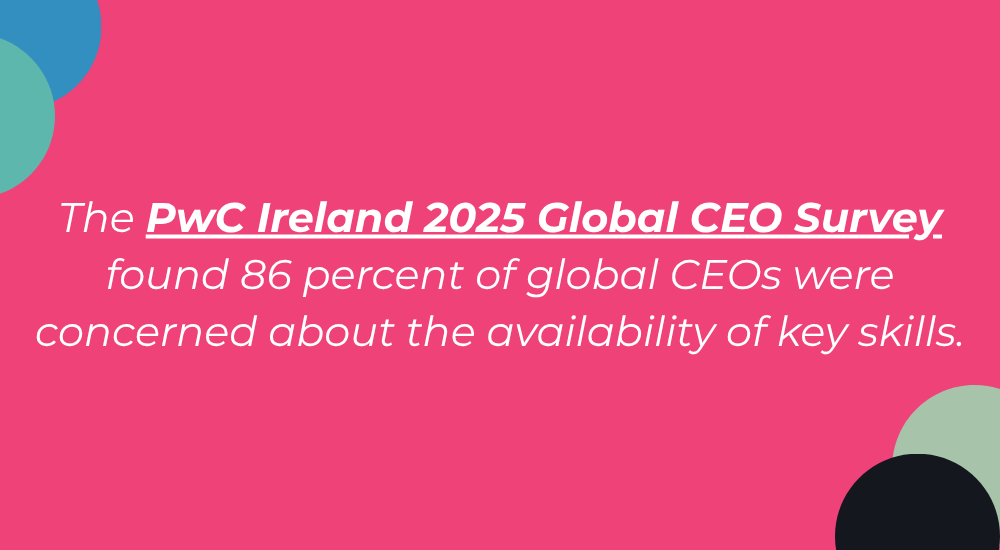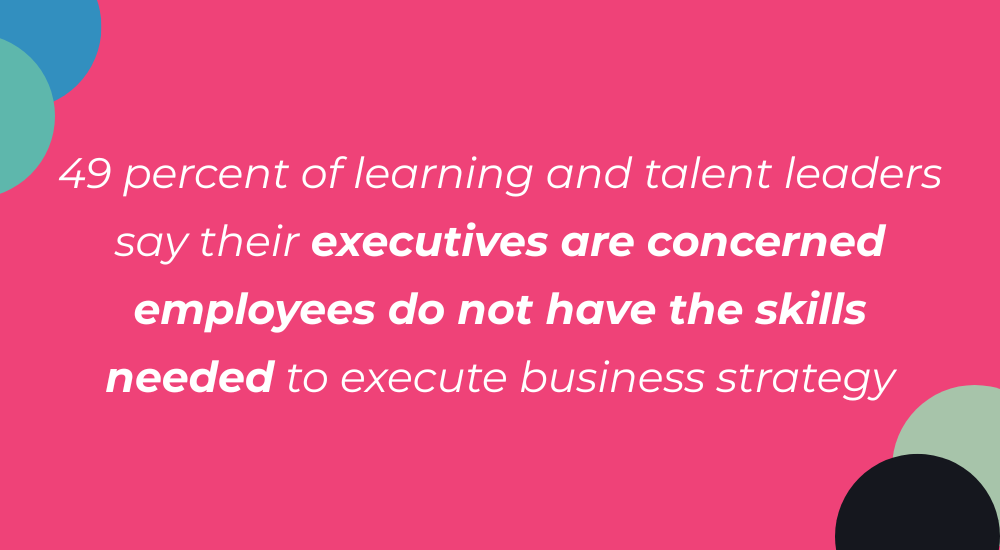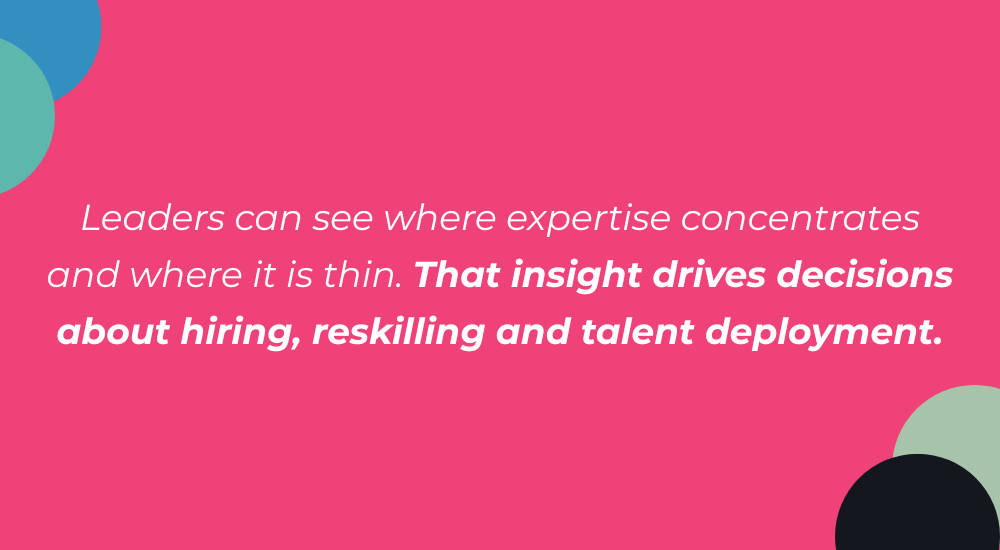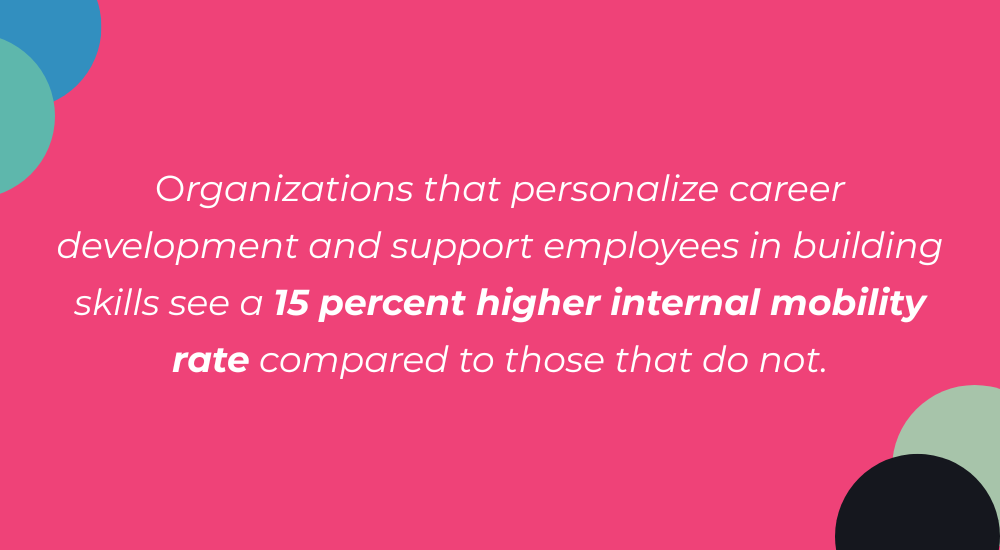From roles to capability: Rethinking talent in finance
Walk through any major financial institution and you will see structure everywhere. Layers of titles. Defined job families. Competency frameworks. Org charts that look organized and confident.
Yet speak to senior leaders quietly and a different picture emerges.
We know we have smart people. What we do not have is a clear, up to date view of the skills inside the organization and the skills we will need next.
That uncertainty is not theoretical. It is measurable. The World Economic Forum forecasts that 60 percent of workers will require training by 2027.
The PwC Ireland 2025 Global CEO Survey found 86% of global CEOs were concerned about the availability of key skills.
Put simply, the traditional workforce model in finance, built around roles and tenure, is colliding with a world where capability evolves in real time.
Finance is entering a capability era.

Why roles are losing predictive power
This is not a critique of roles. They still matter for accountability and structure. The issue is that roles alone no longer describe reality.
Technology changes the work itself; AI and automation reshape processes. Regulation evolves faster than policy cycles, markets move at digital speed, a title tells you where someone sits. It does not tell you what they can actually do today or learn tomorrow.
Consider a few examples:
- A credit professional who once focused on lending frameworks now works alongside automation, data pipelines, and machine learning risk models
- A compliance expert now interprets AI driven transaction monitoring and evolving regulatory AI guidance
- A relationship manager synthesizes analytics, market intelligence, and client experience tools instead of relying purely on advisory instincts
Recent industry analysis points to an acceleration in automation across financial services. A 2025 McKinsey report, The End of Inertia: Agentic AI’s Disruption of Retail and SME Banking, notes that agentic AI is moving from task support to full workflow execution in retail and SME banking. The direction of travel is clear. A growing share of banking work is shifting from human execution to AI driven operating models.
In this context, job titles are static. Skills are dynamic. The organizations that win will be those that build, measure, and develop skills with the same rigor they apply to capital and technology.

What skills mapping really means
Skills mapping is gaining traction because it solves a fundamental business question:
Do we have the capability to compete, adapt, and grow in the future we can see and the one we cannot yet see?
According to LinkedIn’s 2025 Workplace Learning Report, 49 percent of learning and talent leaders say their executives are concerned employees do not have the skills needed to execute business strategy. That concern is driving a shift toward skills visibility, structured capability development, and more dynamic talent planning.
Done right, skills mapping does not mean building a long spreadsheet or adopting a buzzword framework. It means answering three grounded questions:
- What skills and behaviors matter most for where we are going as a business
- Where those capabilities exist today and where they do not
- How we build, stretch, and deploy talent accordingly, in a measurable way
It is practical, not abstract. It connects strategy with workforce reality. It ensures learning investment aligns with business needs. It supports mobility by showing pathways based on capability, not legacy hierarchy.

How leading institutions are approaching capability
The institutions that make progress with skills mapping follow certain patterns:
- Define skills and behaviors with specificity, not generic labels
- Focus on observable capability, not job titles
- Use a mix of human judgement and data rather than one or the other
- Build learning pathways tied to skills, not titles or one-off courses
- Refresh skill priorities frequently instead of annual cycles
They also treat capability as an organizational system rather than a silo. Hiring, development, mobility, performance management and workforce planning start to align around the same skill language.
In the most forward-leaning institutions, teams are mapped for capability clusters. Leaders can see where expertise concentrates and where it is thin. That insight drives decisions about hiring, reskilling and talent deployment.
Capability becomes an asset, not a cost.

The cultural shift: clarity accelerates growth
Skills mapping changes how people grow.
When employees see the skills that matter and where they stand, they take ownership. Pathways become visible. Internal mobility increases. Coaching becomes informed rather than ad hoc. Learning becomes strategic rather than optional.
The data supports this shift. According to LinkedIn’s Global Talent Trends report, organizations that personalize career development and support employees in building skills see a 15 percent higher internal mobility rate compared to those that do not.
This capability mindset also builds confidence. Financial institutions are full of deep domain know-how. Skills visibility brings that expertise to light and strengthens culture rather than threatening it.
In an industry where many younger professionals worry about keeping pace with technology and many senior professionals worry about relevance, clarity is stabilizing.

Where this leads
Financial services has always rewarded clarity and data-driven decision-making. Yet historically, talent decisions have relied heavily on experience, role title, and intuition.
That model no longer fits.
Institutions that build skill visibility will:
- Deploy talent with more speed and accuracy
- Reduce reliance on hiring external talent at a premium
- Build internal capability and resilience
- Strengthen readiness for regulation, disruption and change
- Retain high-potential employees by showing clear paths to growth
The future of talent in finance is defined by capability. The question for leadership is simple: Do you know the skills inside your organization? Are you developing them intentionally?
In a world shaped by information and fast-moving markets, knowing your people may now be one of the most important parts of knowing your business.


